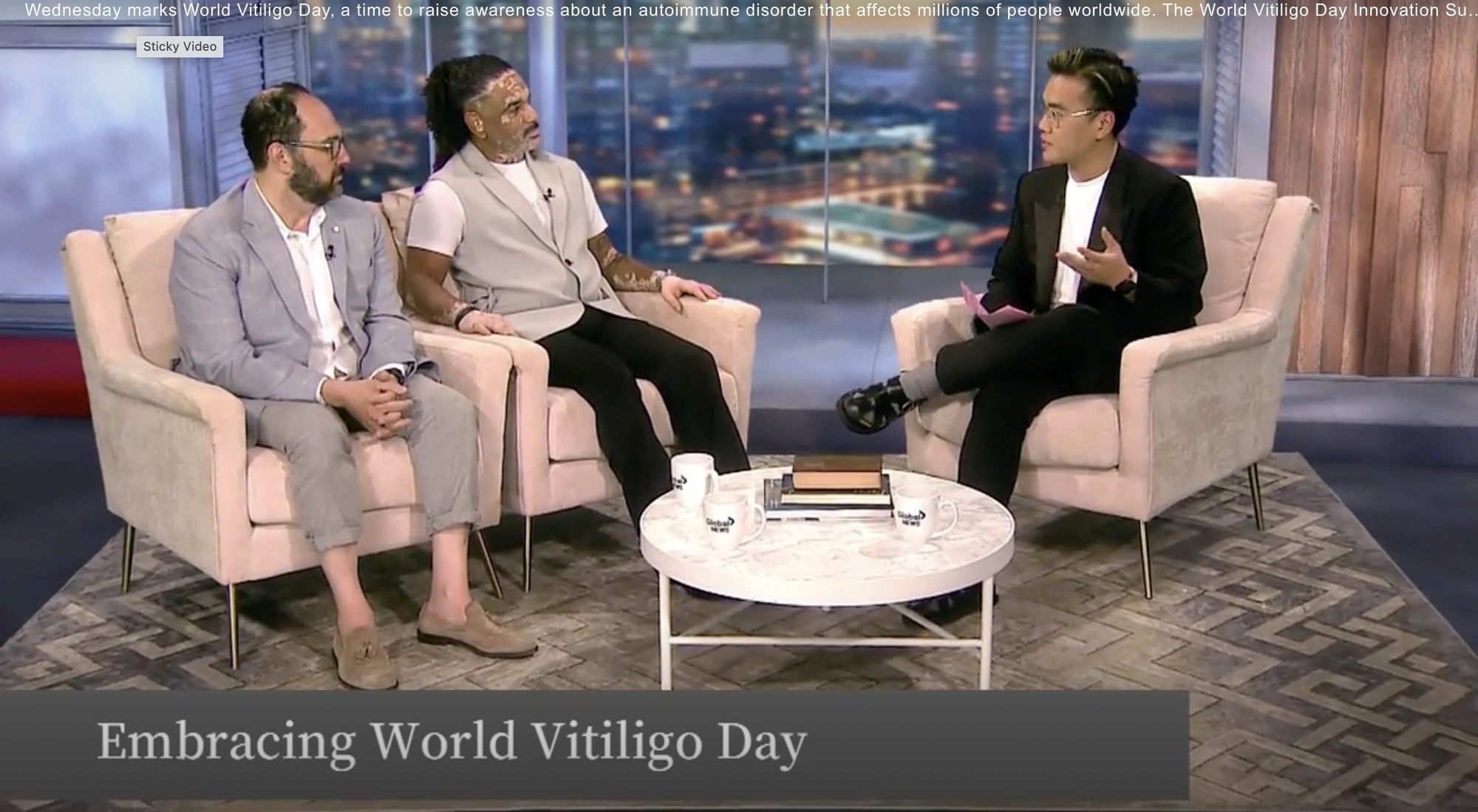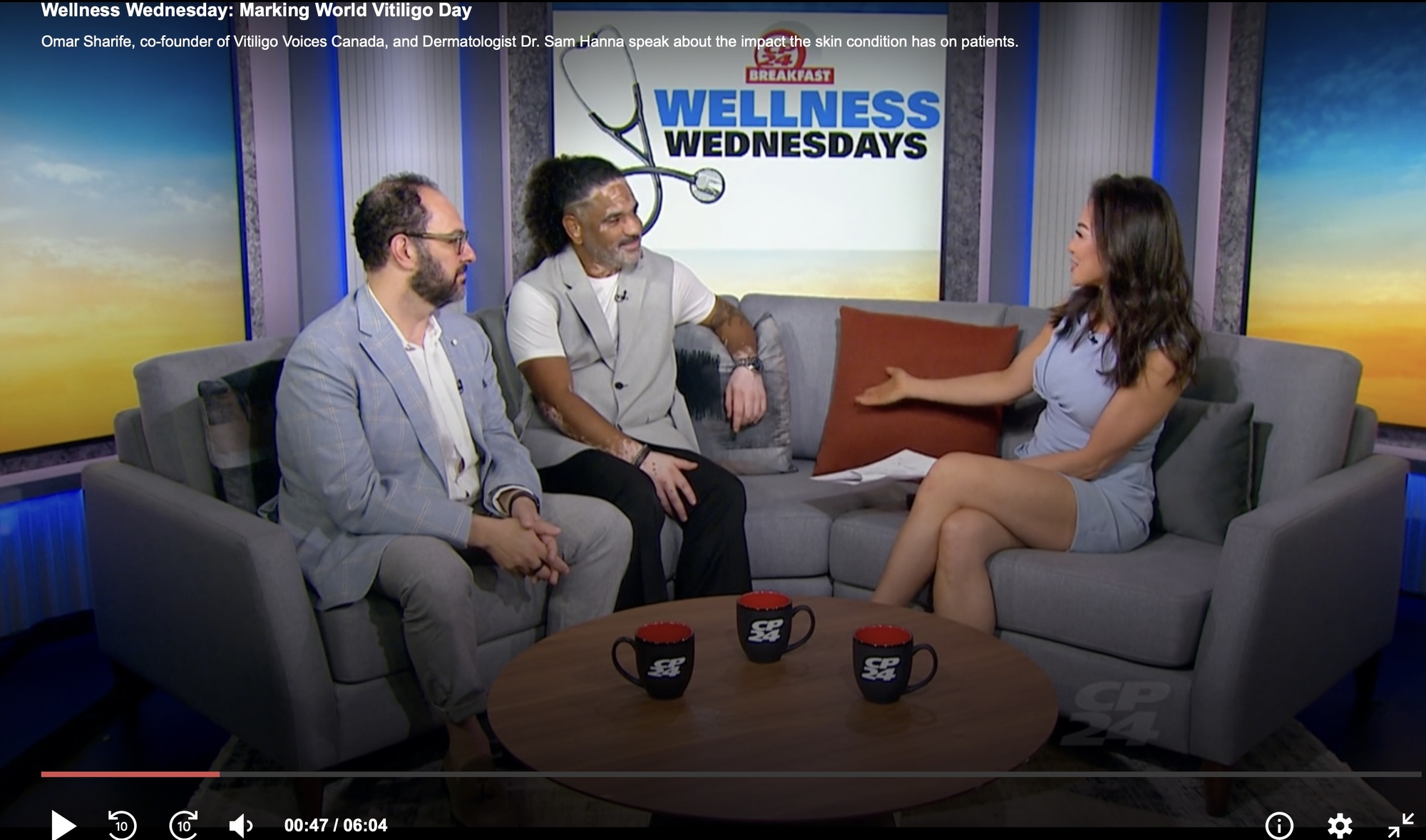New
World Vitiligo Day’s Media Coverage Evolution: From Detroit to Toronto
World Vitiligo Day has soared from a near-silent 2012 launch to lighting up 60 million screens in 2025 — tracing a path from Detroit’s first TV shout-out to Toronto’s media splash, with Chandigarh queued up for 2026.
TL;DR
World Vitiligo Day 2025 lit up every major channel we could measure. Toronto’s breakfast-TV spots put the story in front of roughly 200 000 live viewers and another 50 000 via replays. TikTok exploded with more than 54 million impressions under #worldvitiligoday and related tags, while Instagram added around 12 million and Facebook close to 3 million. After removing overlap between platforms, we land on about 60 million distinct people reached on June 25 alone. That tally covers only measurable English-language activity from Toronto — no LinkedIn, Telegram, radio, print, streaming, or the multi-lingual surge overseas. Fold those in and the global WVD-2025 footprint likely sits somewhere between 120 and 150 million impressions.
Mainstream TV and Media
World Vitiligo Day slipped onto breakfast-time television back on 25 June 2013, when Fox 2 Detroit’s Lee Thomas — four-time Emmy winner and proud vitiligan — handed the cause six precious minutes. I shared the sofa with Dr Masha Henderson of Henry Ford Hospital, giving viewers a first clear look at what vitiligo is, why it matters, and how treatments were beginning to improve.
A dozen years later the spotlight jumped the border. On 25 June 2025, Global News Toronto picked up the torch. Weather specialist Liem Vu chatted with advocate Omar Sharife and dermatologist Dr Sam Hanna about everything from AI-powered diagnosis to the emotional boost of seeing vitiligo represented on-screen. Vu, true to form, slipped in a personal note about sunscreen habits — because no Canadian weathercaster misses a chance to talk UV.
Later that morning the same duo popped up on CP24’s Wellness Wednesday segment, hosted by Jennifer Hsiung and Nick Dixon. Sharife reminded viewers that Toronto is the first Canadian city to host World Vitiligo Day and flagged the AI Innovation Summit at MaRS, while Dr Hanna stressed how early treatment lightens both the physical and emotional load.
🤔 How crowded was the virtual café?
- Global’s The Morning Show reaches about 1.2 million Canadians each week, averaging roughly 150 000 viewers at any given minute
- Pandemic-era Numeris data show CP24’s average-minute audience growing from around 48 000 in 2020 toward markedly higher numbers today
Putting the two breakfasts together, the live reach in Toronto alone flirts with 200 000 viewers. Factor in online clips, on-demand replays and social-media shares, and it’s reasonable to estimate that the total TV audience in Canada's largest city alone for 25 June 2025 comfortably topped 250 000.
Social-media spotlight: TikTok
TikTok is for Gen Z what breakfast television is for their parents and grandparents: the place where daily stories land first and loudest. So, after looking at the morning-show numbers, it makes sense to put TikTok’s pulse beside them.
On June 25, 2025 the two Toronto breakfast slots delivered roughly 200 000 live viewers; once you add replays, online clips and social share, the broadcast reach comfortably cleared 250 000 eyes.
TikTok, meanwhile, multiplied that footprint. The hashtag #worldvitiligoday alone saw more than 8 600 posts; top clips under #vitiligo and related tags pulled tens of thousands of likes each, sending total views well into the millions. In other words, TV planted the seed, but TikTok let it grow in every language the algorithm could find.
TikTok even pushed a curated page “World Vitiligo Day Celebrations Worldwide” to its trending section, giving posts an extra lift. Most videos mixed short personal stories with educational facts and event highlights. The creators driving that content were mostly women aged 25–34, and while English dominated, you could scroll through Spanish, Portuguese, French and more—proof that vitiligo stories travel well.
Top clips under #vitiligo and #worldvitiligoday drew tens of thousands of likes and comment threads packed with encouragement, questions and, yes, the occasional sunscreen reminder. Add it all up and World Vitiligo Day content reached well into the millions of views, turning TikTok into 2025’s busiest digital town square for vitiligo awareness.
Instagram and Facebook: the visual gallery and the community hall
Instagram kept the spotlight bright with almost 587 000 #vitiligo posts on the books on June 25th. In the week around the date alone, another eleven hundred hit the feed, many echoing the day’s “Innovation for Every Skin” theme with reels, art drops and before-and-after stories. Related tags such as #vitiligobeauty and #vitiligomodel swelled too, showing that personal expression and research news can share the same stage.
Facebook, still the social town square for most adults, leaned into group power rather than raw hashtag counts. With more than four-fifths of North Americans on the platform, event pages, support groups and livestream panels drew steady traffic. Short videos and live Q&A sessions — especially those from clinics and patient advocates — earned the best reactions.
A quick side-by-side
| Channel | Core audience | Reach / volume on 25 June 2025 | Favoured content style |
|
Breakfast TV (Global & CP24) |
Adults 35 + |
250 k + viewers (live + delayed) |
6-minute interview segments |
|
TikTok |
Users 18–34 |
Millions of views across 400 k + posts |
15-60 s clips |
|
Instagram (#vitiligo plus variants) |
Mixed, visual-first |
~587 k lifetime posts, 1 100 new that week |
Reels, Stories, art, event recaps |
|
Facebook (groups, pages, events) |
Adults 25 + |
82 % NA penetration; lively group traffic |
Livestream panels, support threads |
* Direct reach = unique viewers or primary impressions on 25 June.
** Ripple multiplier is a cautious estimate based on average share rates and follow-on impressions published in 2025 benchmark studies.
*** Weighted view figure blends Reel (~16 k views ) and static post (~2.6 k impressions ) averages at a 60 / 40 split.
Direct reach vs ripple effect
Think of direct reach as the people we can count with reasonable confidence — Nielsen meters, platform impressions, hashtag posts — while ripple effect is the second wave that rolls out when those viewers repost, comment, or just bring it up over lunch. Rounded figures keep things realistic yet reader-friendly.
What this means for sponsors
- Hard numbers first: roughly 70 million people saw World Vitiligo Day content the day it happened.
- Soft power next: another 12 million came in through shares, stitches, and “Hey, did you see…?” moments—an earned-media boost of ~17 %.
- Platform synergy: TV lent mainstream credibility, TikTok supplied viral velocity, Instagram delivered polished storytelling, and Facebook knitted communities together. Each platform hit a different age band, so brand messages ride a relay instead of a single sprint.
- Cost efficiency: breakfast-TV spots are low-CPM but high-trust, while TikTok and Instagram drive scale without the production price tag of traditional ads. For sponsors, that’s a rare combination of breadth, depth, and budget friendliness.
Bottom line: 80+ million impressions in one coordinated 24-hour window show why World Vitiligo Day has become a media tent-pole worth backing — and why future partners can expect both solid numbers and an after-glow that lasts well beyond June 25.
| Channel (25 Jun 2025) | Direct reach* | How we got there | Ripple multiplier** | Extra eyeballs | Total potential impact |
| Breakfast TV (Global’s The Morning Show + CP24 Breakfast) | ≈ 200 k viewers | TMS weekly reach 1.2 M/7 ≈ 170 k AMA + CP24 AMA ~ 48 k | x 1.3 (social clipping, word-of-mouth) | + 60 k | ≈ 260 k |
| TikTok (#worldvitiligoday cluster) | ≈ 54 M impressions | 8 600 posts × avg 6 268 views | x 1.15 (avg 170 shares/post) | + 8 M | ≈ 62 M |
| Instagram (#vitiligo tag, WVD week) | ≈ 12 M impressions | 1 100 new posts × weighted 10 746 views*** | x 1.3 (41 shares/post avg) | + 4 M | ≈ 16 M |
| Facebook (groups, pages, events) | ≈ 3 M reach | Conservative slice of NA user base (82 % penetration) engaging with WVD posts | x 1.3 (re-shares, watch-parties) | +1 M | ≈ 4 M |
| All channels combined | ≈ 69 M | — | — | ≈ 12 M | ≈ 81 M |
Overlap and “true-unique” reach
(why totals ≠ a simple sum)
Most people now juggle several screens at once, so counting heads demands a bit of set theory. Below are the best hard-data intersections we have, followed by a stepped-through estimate of how many different people actually saw World Vitiligo Day content we could measure on 25 June 2025.
Key overlap facts we can document:
- More than 4 in 5 TikTok users (≈ 80 %) also use Instagram.
- Roughly 80 % of weekly TikTok users are also on Facebook.
- 80.3 % of Instagram users are on Facebook, while 77.6 % of Facebook users are on Instagram.
- About 53 % of Instagram users also open TikTok each month.
What those intersections mean in practice:
- Start with TikTok’s direct impressions ≈ 54 million (our best-countable views for #worldvitiligoday clips).
- Add Instagram, but strip out the 53 % already on TikTok. Unique IG slice ≈ 12 M × 0 .47 ≈ 5.4 M → running total ≈ 59 M.
- Add Facebook, but only the ~20 % who aren’t on IG or TikTok.
- Unique FB slice ≈ 3 M × 0 .20 ≈ 0.6 M → running total ≈ 60 M.
- Breakfast-TV viewers: assume 30 % don’t touch those three social platforms that day (based on age skew and Canada adoption rates). Unique TV slice ≈ 0.2 M × 0 .30 ≈ 0.06 M → running total ≈ 60.1 M.
Result: ~60 million genuinely distinct people encountered measurable WVD-Toronto coverage on the day itself. That’s about 75 % of the raw, channel-by-channel sum, which tracks with typical duplication seen in multiscreen media studies.
Important scope caveats
The impact figures above capture only what we can directly measure from the Toronto-based broadcast hits plus the activity we can see and count on TikTok, Instagram and Facebook on 25 June 2025. They do not yet include:
- traffic from campaign, VRF and Toronto Tech Week websites;
- clicks from newsletter campaigns;
- Winnie Harlow-focused media campaign;
- LinkedIn, Telegram, X/Twitter, Threads, or niche networks;
- radio, newspapers, podcast mentions, or streaming-video news clips;
- mainstream coverage in other English-speaking markets (Google Trends shows a clear breakout for “World Vitiligo Day” searches in the U.K., Australia, India, Nigeria and South Africa);
- a massive WVD-USA event in Tampa, FL on June 27-29;
- campaigns and media hits in other languages — especially across Europe, where VIPOC members ran energetic, multi-lingual drives.
In other words, our current estimate confines itself to the measurable Toronto hub on the day itself. This is just the measurable tip of a very bright iceberg. As fresh numbers surface from those other channels, we will fold them in.
A prudent academic guess
In a slightly academic register: while we cannot yet produce a fully defensible global figure for the media effect of the WVD-2025 campaign, the evidence suggests the final footprint will settle somewhere in the 120-to-150 million-impression range once secondary platforms, non-English media, and delayed coverage are folded in. Anything outside that corridor would stretch the current data beyond responsible inference.
For sponsors, that range is the best current indicator of how far a single-day, multi-platform effort can travel — before we even tally the echoes from LinkedIn think-pieces, Telegram community chats, regional radio spots or the Portuguese-language press.
Final thoughts
Television planted the seed, TikTok let it sprout, and Instagram and Facebook filled out the canopy — each platform meeting its own age band in the way they like to talk. Together they turned World Vitiligo Day 2025 into a cross-channel chorus rather than a solo act, carrying the message from morning coffee all the way to late-night scrolling.
And just so you can pencil it in early: the World Vitiligo Day 2026 headquarters is packing its sunscreen and heading to Chandigarh, India. So if you missed Rome’s quiet debut or Toronto’s breakfast-TV splash, the next chapter will come with extra spice—and, likely, a lot more chai.
– Yan Valle, from WVD-2025 HQ
Professor h.c., CEO VR Foundation
27 June 2025
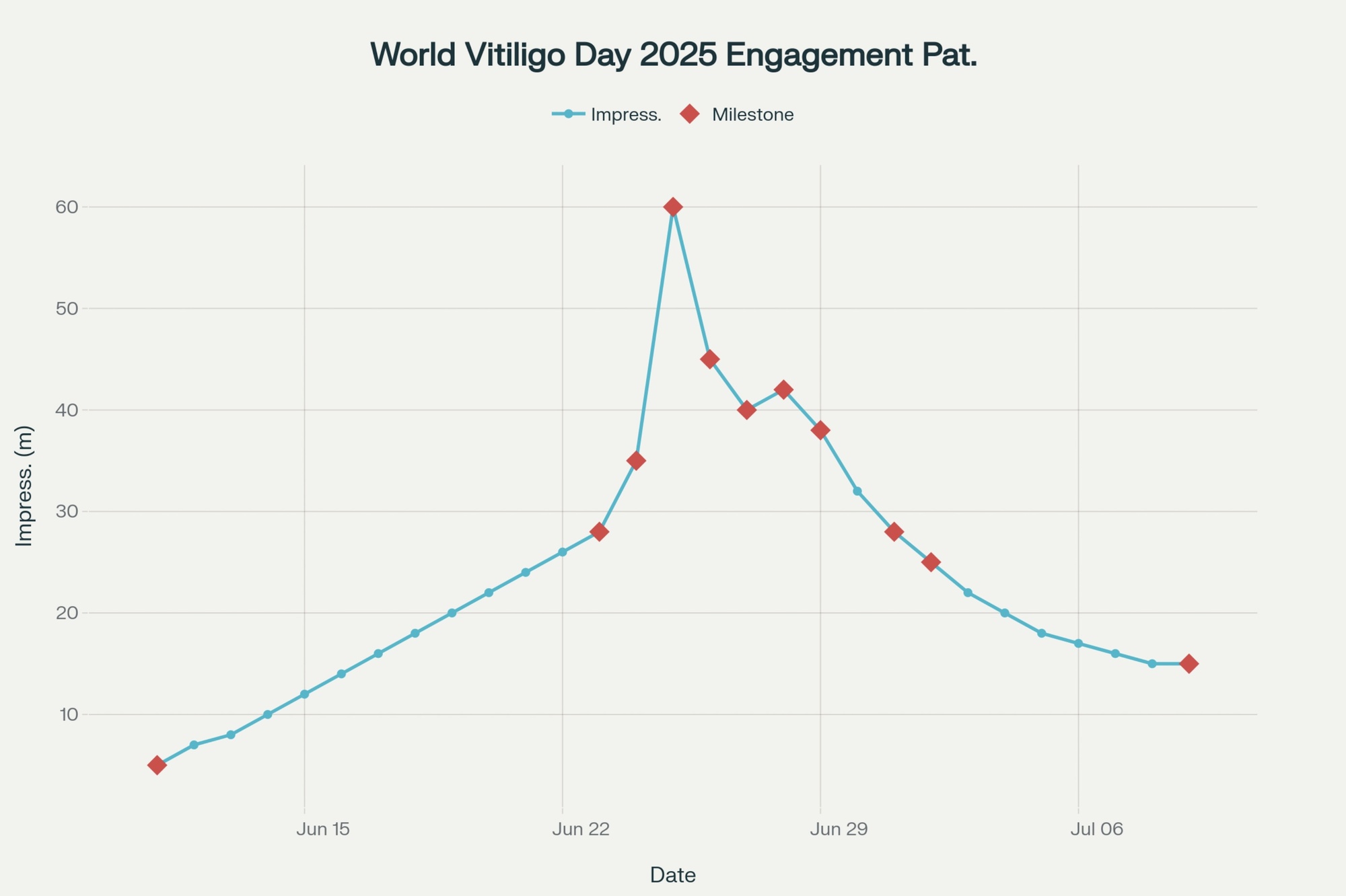
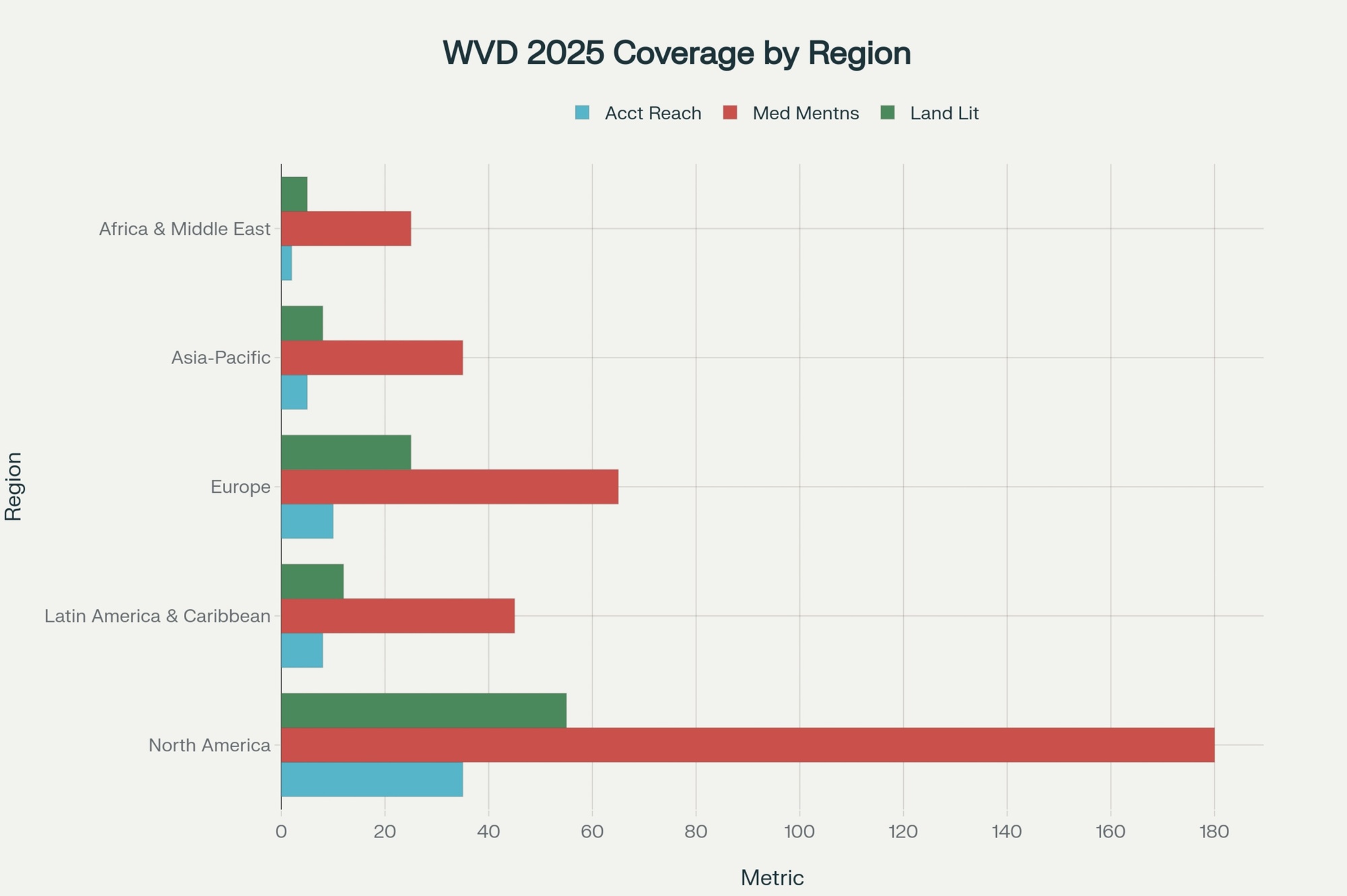
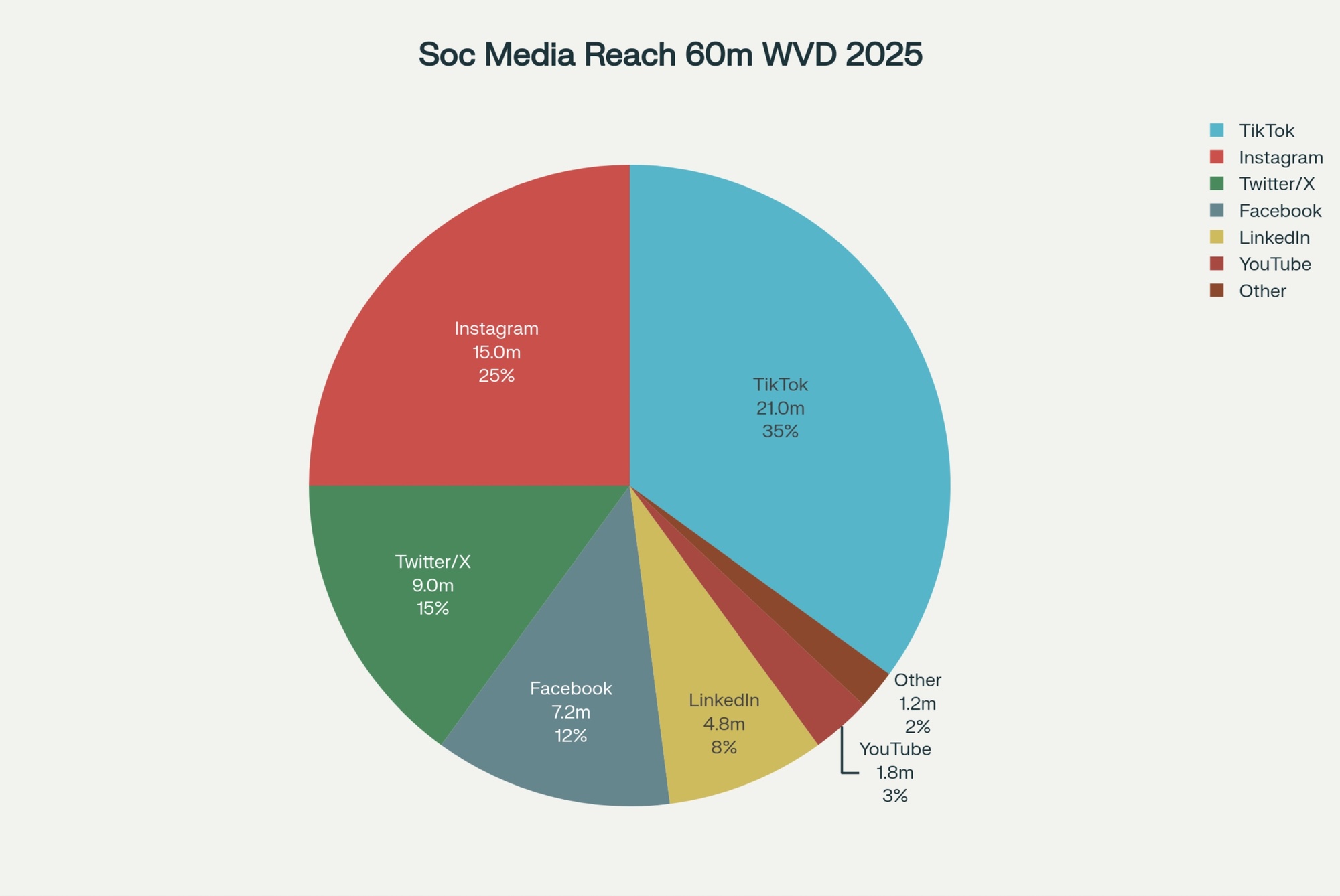
Continue reading:
- Fifteen Candles: Toronto Celebrates World Vitiligo Day 2025 in Purple
- World Vitiligo Day 2025 – Global Celebrations & Media Footprint
- The Entire History Of The World Vitiligo Day
- World Vitiligo Day: A Model for Grassroots Medical Activism and Pharmaceutical Innovation
FAQOther Questions
- Is there a link between vitiligo and depression?
Depression and anxiety are often linked with vitiligo, significantly impacting a person’s quality of life. The connection stems from the shared origin of the skin and brain duri...
- What is vitiligo?
Vitiligo (pronounced vit-ill-EYE-go) is a generally unpredictable skin disease that causes a gradual loss of skin color and overlying hair on different parts of the body. Cont...
- Is it possible to stop the progression of vitiligo?
While it's not always possible to quickly stop vitiligo progression, there are some treatments that can help slow or halt the spread of the condition in many cases: Corticoster...
Though it is not always easy to treat vitiligo, there is much to be gained by clearly understanding the diagnosis, the future implications, treatment options and their outcomes.
Many people deal with vitiligo while remaining in the public eye, maintaining a positive outlook, and having a successful career.
Copyright (C) Bodolóczki JúliaBy taking a little time to fill in the anonymous questionnaire, you can help researchers better understand and fight vitiligo.

